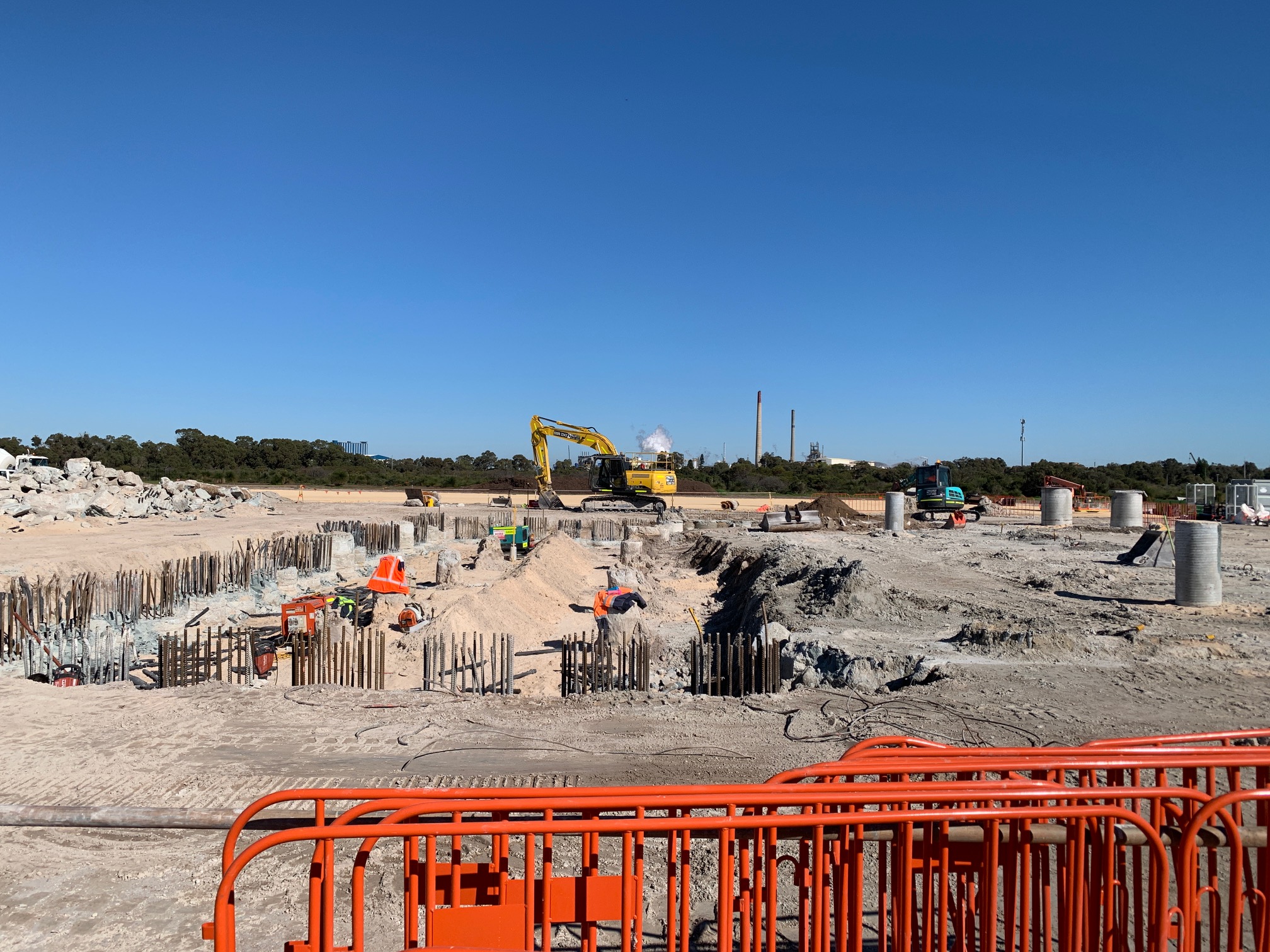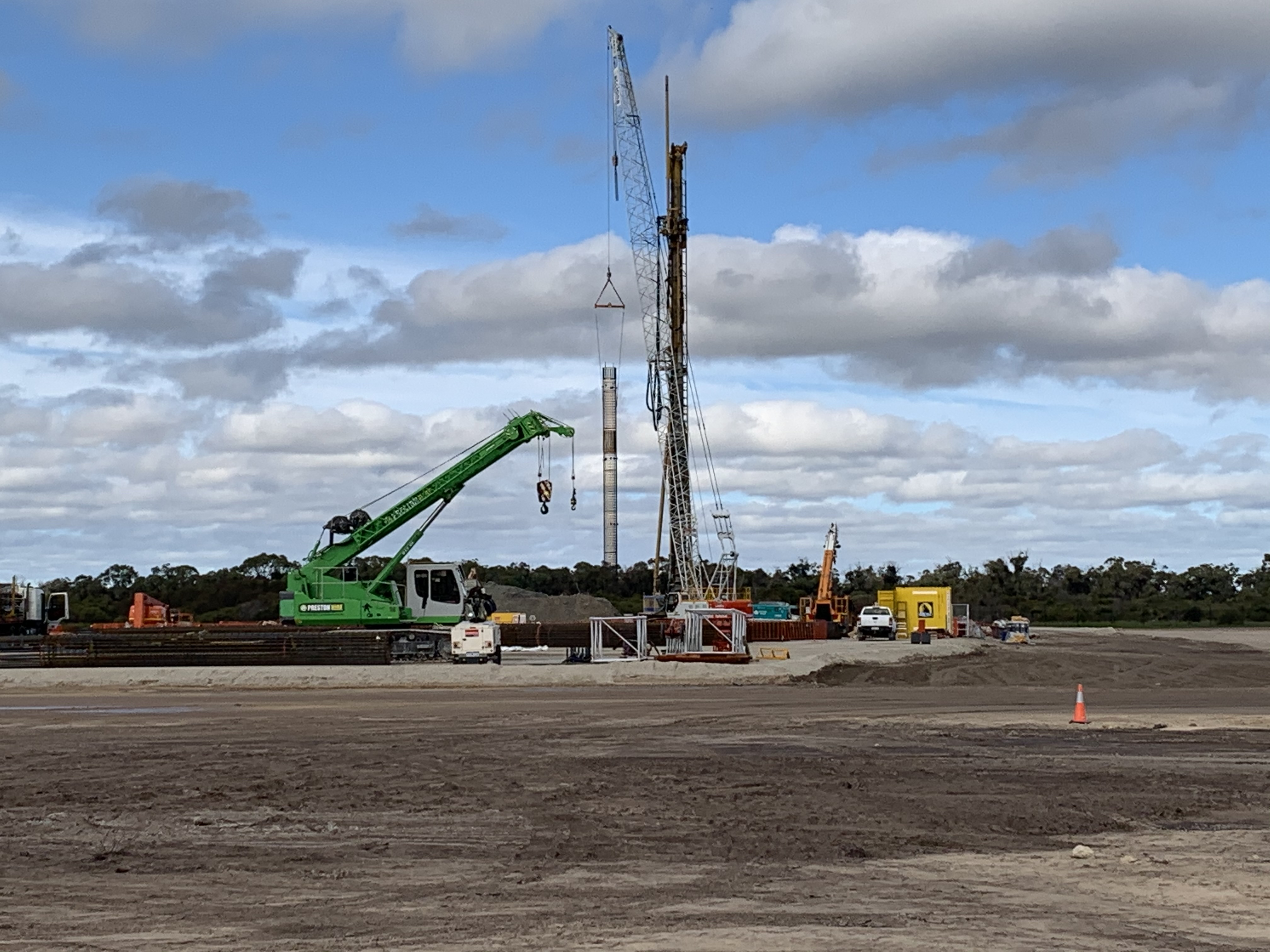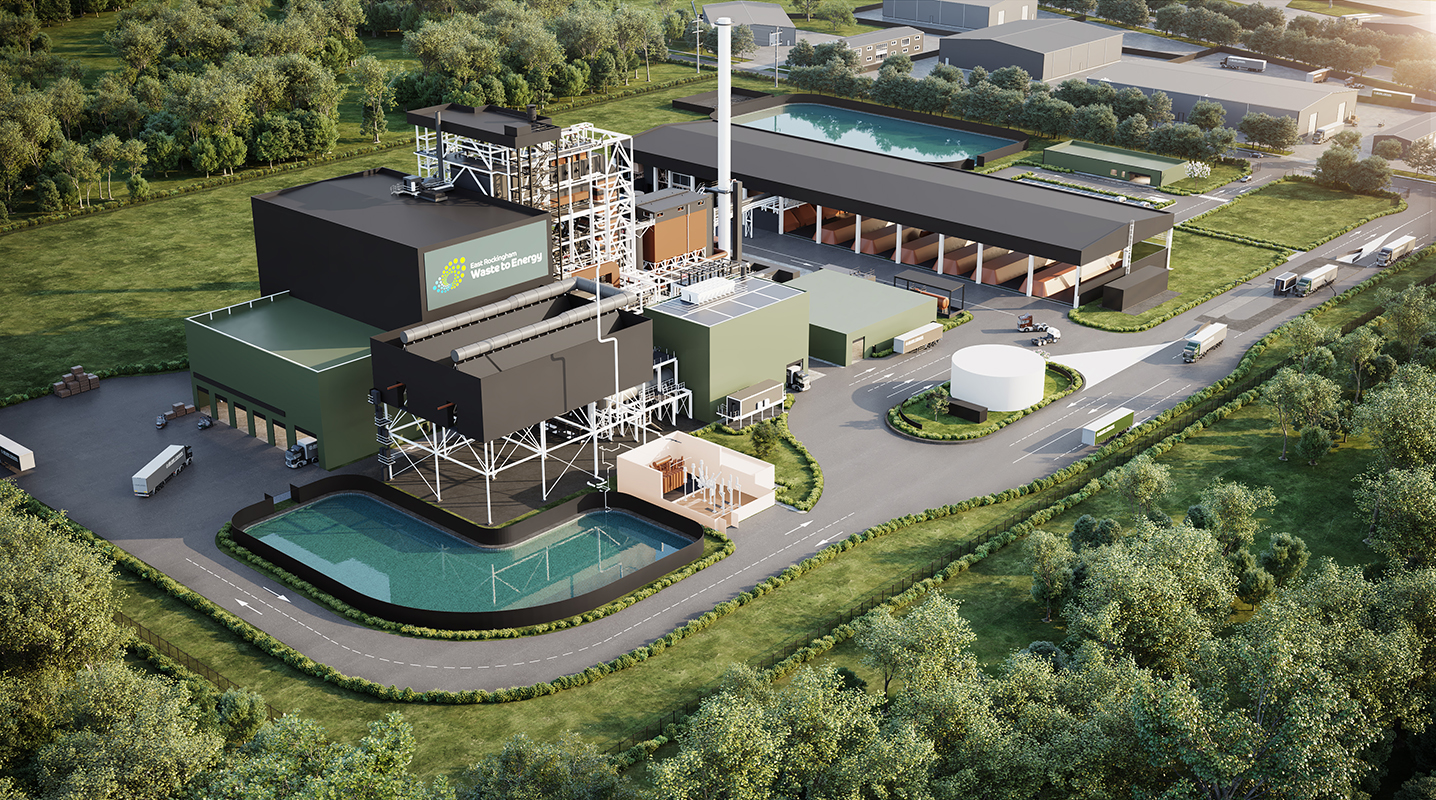Australia’s Second Waste-to-Energy Plant Enters Second Phase of Development
A large-scale project to eliminate Australia’s domestic waste over the long term has commenced its second stage of construction. Positioned in the Rockingham industrial zone south of Perth, the $511 million Waste-to-Energy (WtE) plant aims to deliver environmental, economic and social benefits to the broader Perth community.
Since the successful financial close of the East Rockingham Waste-to-Energy project in December 2019, the civil works of the 300,000-tonne facility is progressing into the second phase of development.

Image supplied: Bunker piling complete including secant walls. Commenced piling cutting and excavating for ground beam on top of secant wall.
The state-of-the-art facility converts residual waste that would otherwise go to landfill into reusable energy. Once complete, East Rockingham will have the capacity to convert up to 300,000 tonnes of waste per annum, generating 29 MW of green electricity that will power around 36,000 homes in the Perth area every year. This will prevent more than 300,000 tonnes of CO2, the equivalent to the pollution generated by 64,000 cars.
The contract to design, build, and commission the plant was awarded by the project shareholders to Swiss cleantech company Hitachi Zosen Inova (HZI) a global leader in technology supply and turnkey delivery of WtE projects, and Acciona Industrial, a global leader in sustainable solutions for infrastructure, renewable energy and water treatment projects.
The project scope includes the design, procurement, construction and commissioning of the following combined components:
- 140,000m³ of topsoil and earthworks
- Some 480 structural piles, 600-1200mm in diam., up to 34m deep
- 100,000m² of detailed earthworks
- 17,000m³ of concrete civil works
- 3,700 tonnes of structural steel
- 9.7km of piping, and 226km of cabling.
HZI adjusted its scope from full engineering, procurement and construction to the process technology, while Acciona supplies all civils, the turbine and balance of the plant.

Image supplied
Marc Stammbach, Managing Director of HZI Australia says the design considerations reflected the company’s global use of the technology.
“The 300,000 tpy residual WtE project was scaled to allow enough room for EMRC and other waste suppliers to recycle and compost as much as they can without any obligation to supply a minimum waste volume.
“We chose a one-line plant of a size which was already built and proven in the UK and Ireland,” Dr Stammbach said.
“Whilst NEC had a fully permitted site for its gasification technology, we still had to go for re-permitting based on the HZI moving grate and flue gas treatment technology.”
The plant will treat residual waste from municipal commercial and industrial sources including up to 65,000 tonnes per annum of waste supplied by French waste management company Suez.
Additionally, per year 7,000 tonnes of metals are recycled from the bottom ash and its inert fraction is processed to 65,000 tonnes per annum aggregate for use in road bases and other construction materials.
This all-encompassing process of recycling waste and turning by-products into raw materials continues to drive the circular economy, a sustainable practice the planet will benefit from.
“WtE is about recycling residual waste to energy, clean gas, metals and aggregate. The remaining four per cent residue is from flue gas treatment residues and will still go to landfill but won’t contribute any greenhouse gases,” Dr Stammbach said.
“In all cases, recycling and composting come first, and only residual waste goes to WtE. Together, all of the above helps us to achieve climate-neutral and sustainable waste management.”

Image supplied: Rendered ERWTE
While COVID-19 has predominantly shifted the work to home offices, the project’s delivery date has stayed much the same.
“We need to fly in some overseas specialists in the next two years to help with erection, installation, training and commissioning.
“In the meantime, we ramp up the local employment, and several hundred people with be working on the site soon.”
The project received the Notice to Proceed on January 3, 2020, and is set to be complete on December 2, 2022, 35 months after the Notice.
Dr Stammbach says the positive community and government response to the Western Australia plant has prompted future plans to further embrace WtE processing for residual waste.
“HZI and other industry participants are busy planning the next projects which are likely to be in Victoria and then Queensland and New South Wales.”
“As a company, we are also supplying biogas solutions for organic waste and generating hydrogen and methane from renewable power. We are also ready to retrofit CO2-removal from flue gas to achieve a negative carbon footprint for WtE!” he said.
